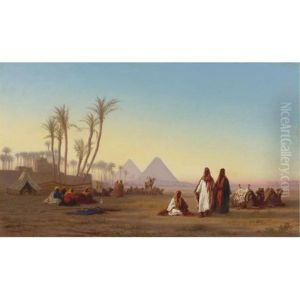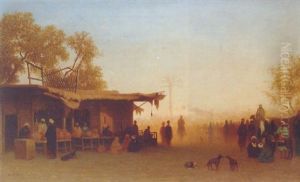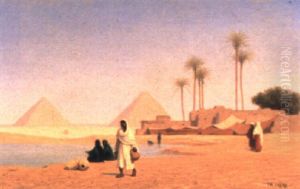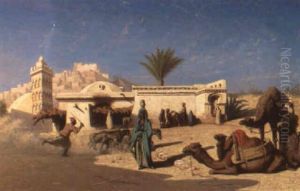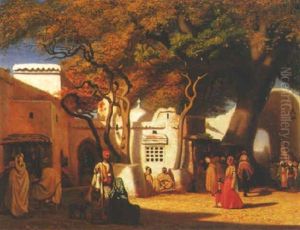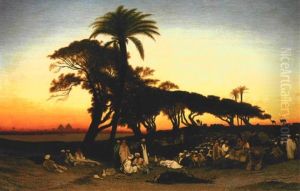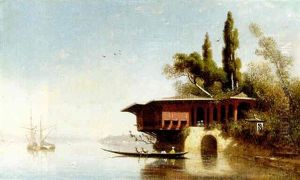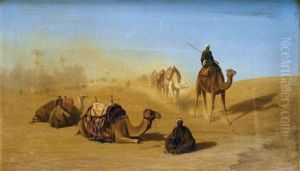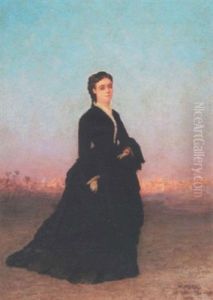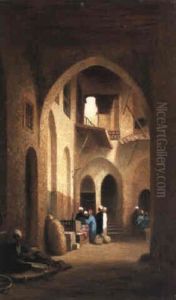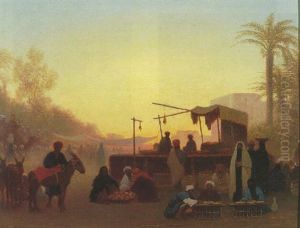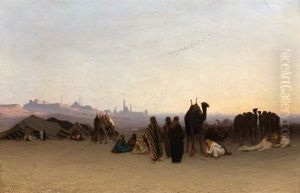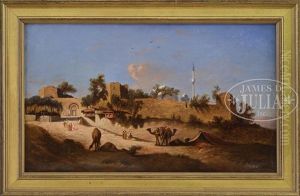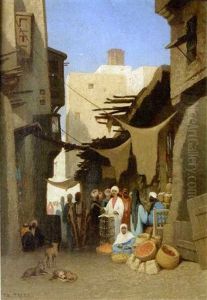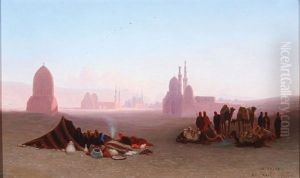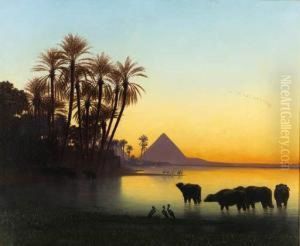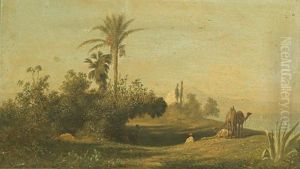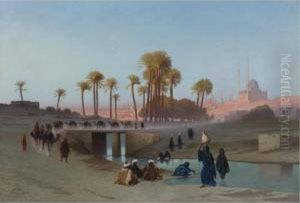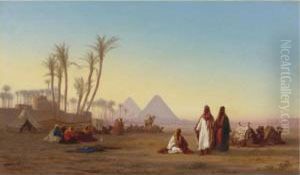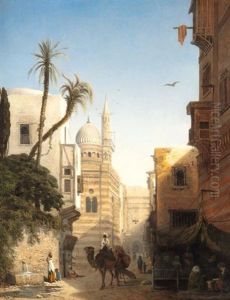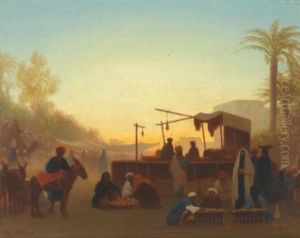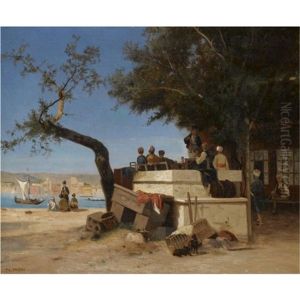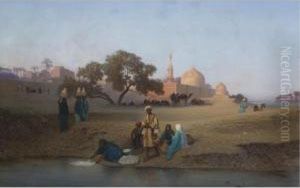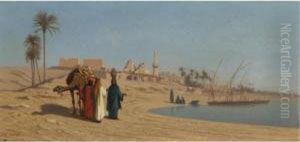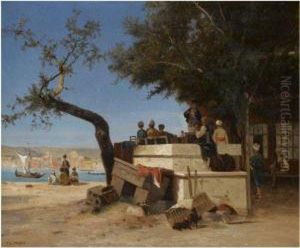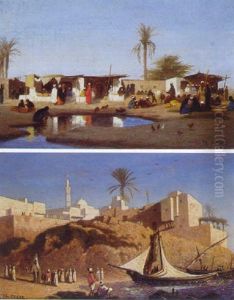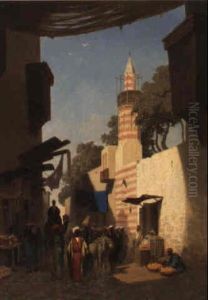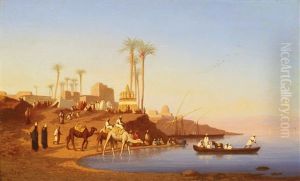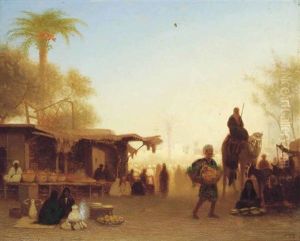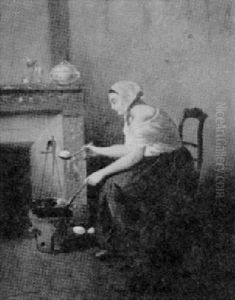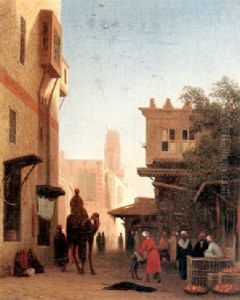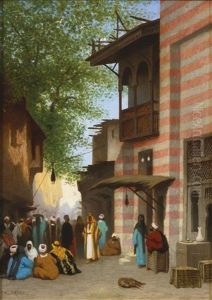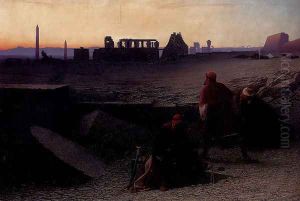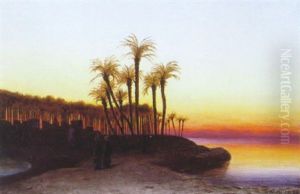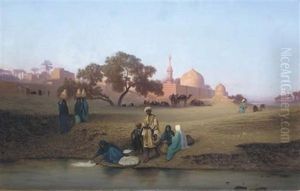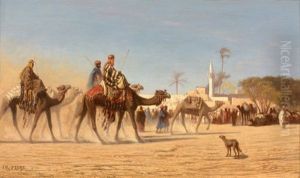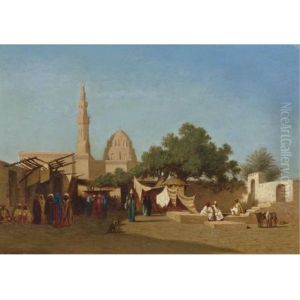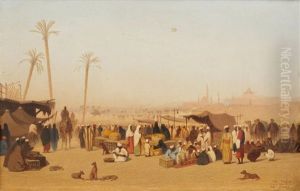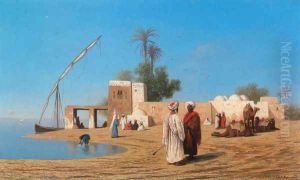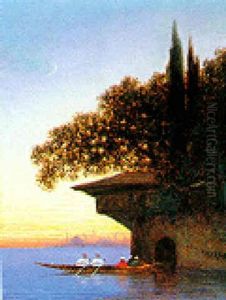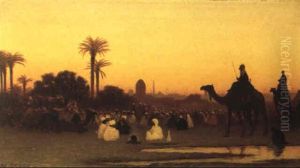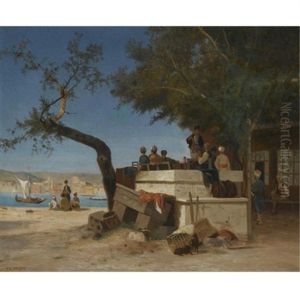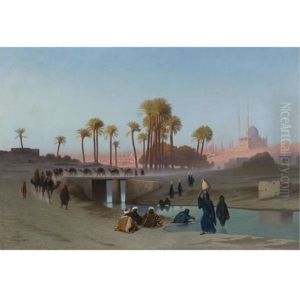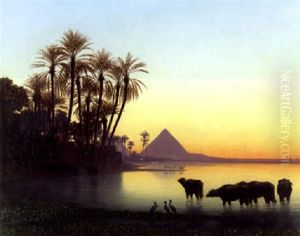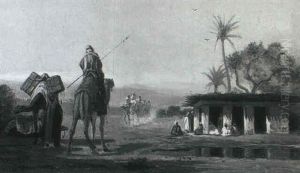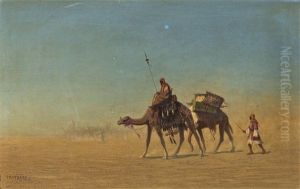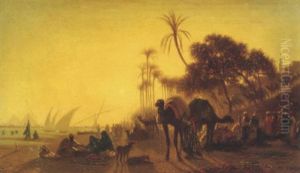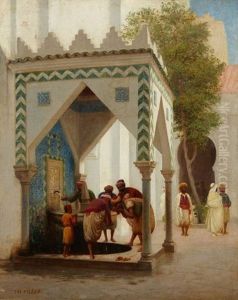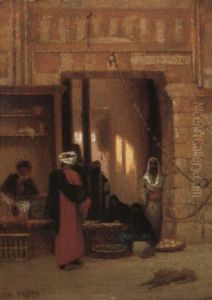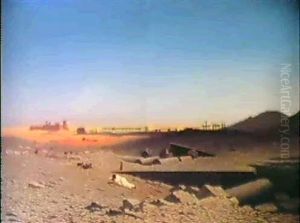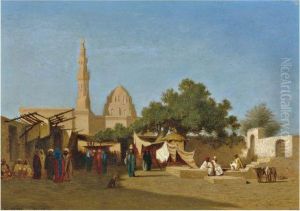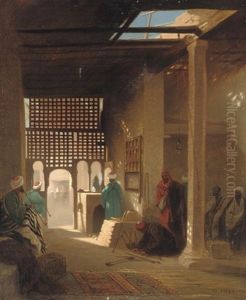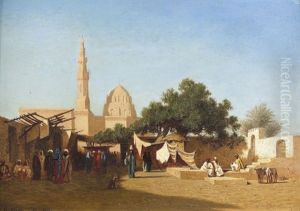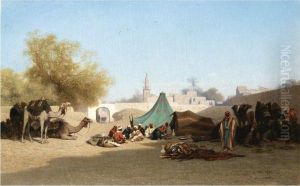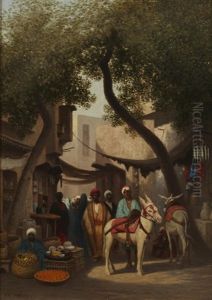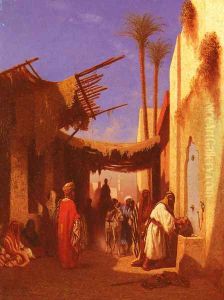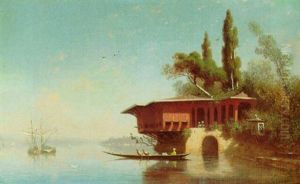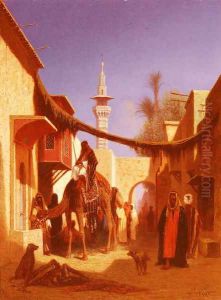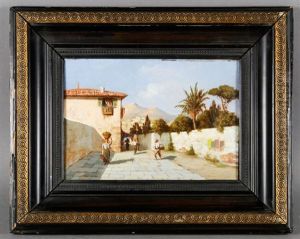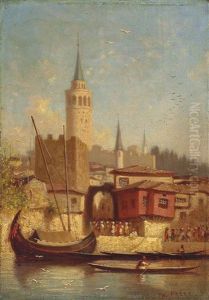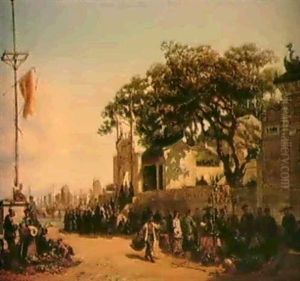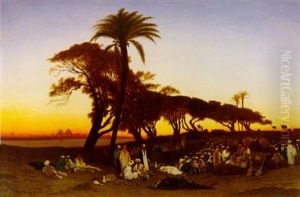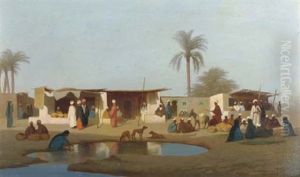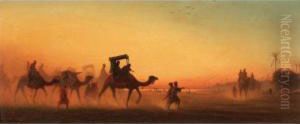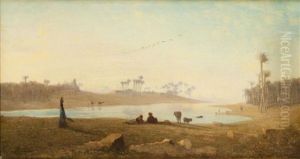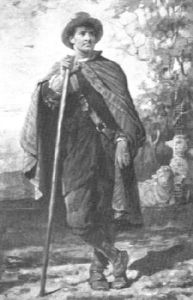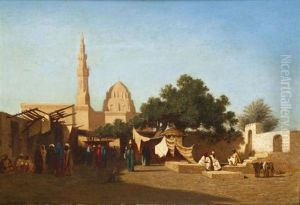Charles Theodore Frere Paintings
Charles Theodore Frere, known as Charles-Théodore Frère, was a prominent French Orientalist painter born on June 21, 1814, in Paris, France. He was known for his vivid portrayals of Middle Eastern landscapes and scenes of daily life. Frere received his initial artistic training under the guidance of Camille Roqueplan, a well-known French painter. He also studied under the landscape painter Paul Delaroche, who was influential in shaping his early career.
Frere's work was heavily influenced by the 19th-century European fascination with the 'Orient,' a term used at that time to describe the Middle East and North Africa. This fascination was part of the larger Orientalism movement in art, which saw Western artists and writers depict Eastern cultures in a romanticized light. Frere was captivated by the exoticism of these distant lands and their cultural richness, which was starkly different from the Western world.
In 1836, Frere made his first trip to Algeria, which had recently become a French colony. The journey made a lasting impression on him, and he returned to North Africa and the Middle East multiple times throughout his career. He traveled extensively, visiting countries such as Egypt, Syria, Turkey, and Persia. His experiences in these countries provided an abundance of subject matter for his paintings.
Frere's works were characterized by their meticulous detail, vibrant colors, and the skillful use of light. He often depicted bazaars, street scenes, caravans, and landscapes, capturing the essence of the places he visited. His paintings were well-received, and he gained considerable fame during his lifetime. Frere exhibited his works at the Paris Salon, where he won several medals, and he was decorated with the Legion of Honour in 1850 for his contributions to French art.
The artist's legacy is marked by his role in bringing the visual culture of the East to the attention of the Western world. His paintings continue to be appreciated for their aesthetic beauty and historical value, offering insights into the perceptions and imaginings of the Orient by European artists during the 19th century.
Charles Theodore Frere continued to paint until his death on March 24, 1888, in Paris. His works are part of collections in various museums around the world, including the Louvre in Paris and the Hermitage Museum in Saint Petersburg, Russia.
